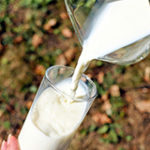Blog

Happy Halloween! Trick or Choke?
What child doesn’t love Halloween? In fifteen years as a pediatric ear, nose, and throat doctor, Halloween is always my slowest workday. What parent would dare subject their child to a doctor’s appointment, or (perish the thought!) a surgery, on the most sacred of sugar-filled days? Everyone gets involved; newborns don some sort of cute, oversized pumpkin onesy, or get dressed up as a pea in a pod. Toddlers waddle around as bunnies, lions, and teddy bears; preschoolers wear capes or carry fairy wands, and elementary schools are laden with Harry Potters and Wonder Women. And the candy is endless! Sugar is limitless, kids are allowed to scare their teachers (within reason), and school assignments undoubtedly include some sort of crossword puzzle with the word ‘jack-o-lantern’ in it.
All of us know the good part about Halloween; I’ve never met a parent who hasn’t ‘shared’ in their child’s Halloween bounty, and many hope to snap an adorable kid-in-a-costume shot that may work for a holiday card photo. But we must remember the safety issues that arise on this holiday.
All of us rightly worry about losing our child on a dark, crowded street, errant cars injuring children who are running into the street, careless adults on cell phones, not paying attention to their children who are running into the street, or not being able to get our sugar-loaded children to sleep on a school night.
But here’s what I worry about, and, while Halloween day is often a quiet one, Halloween night can be frightful for an airway surgeon: Choking. I don’t mean choking on clothing that is too tight, or external choking by a teenage prankster. I mean choking on regular old candy. The kind your child brings home from preschool, receives from your neighbors, and likely the kind that you are giving out. Choking is the number one cause of accidental death in children under age three years. Yes, it’s true. One child dies every five days in this country from choking on food. Most of these kids are under age three, and most of the food items causing these horrors do not contain warning labels indicating the danger to the under-three crowd.
It’s that ‘magic’ age three, when kids cross the threshold and are allowed to play with toys comprised of ‘small parts’. But what about food with small parts, sticky bits, or unsafe fragments? What was the last food (or candy) label you’ve read with the commonly found toy warning “not for children under three”? Still thinking? Let me know, because those labels don’t exist. And now I’m here to rain on your Halloween parade; no candy is safe for children under three. Label or no label. This includes gum, even if it’s sugarless. Tots can chomp on a thin, plain chocolate bar, if they are seated (so don’t steal those Hershey® bars from your kid’s bag—that’s all they should be allowed to eat).
Children under age three years have neither the motor control, patience, nor airway reflexes to safely eat hard candy, chewy candy, caramel corn, popcorn, or nutty candy, especially on a busy, dark, Halloween night. Older children should be able to do so, but not while walking around trick or treating. Even kids over age four or five years are at high risk for choking on candy if they eat it while in action, and a choking event may go unnoticed if their face is hidden under a Darth Vader mask.
There is plenty of fun to be had on Halloween, while heeding these simple anti-choking tips. Awareness is the first and most important step, which is why I’m writing this. So, Happy Halloween! From your neighborhood airway doctor. Let’s meet up at a party or while trick or treating, not in the emergency room.








